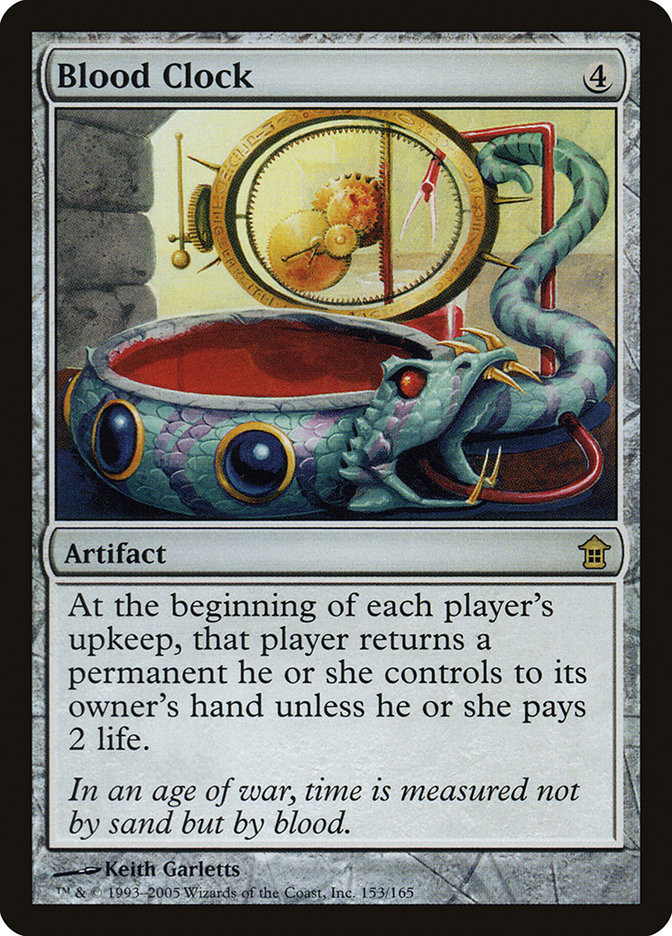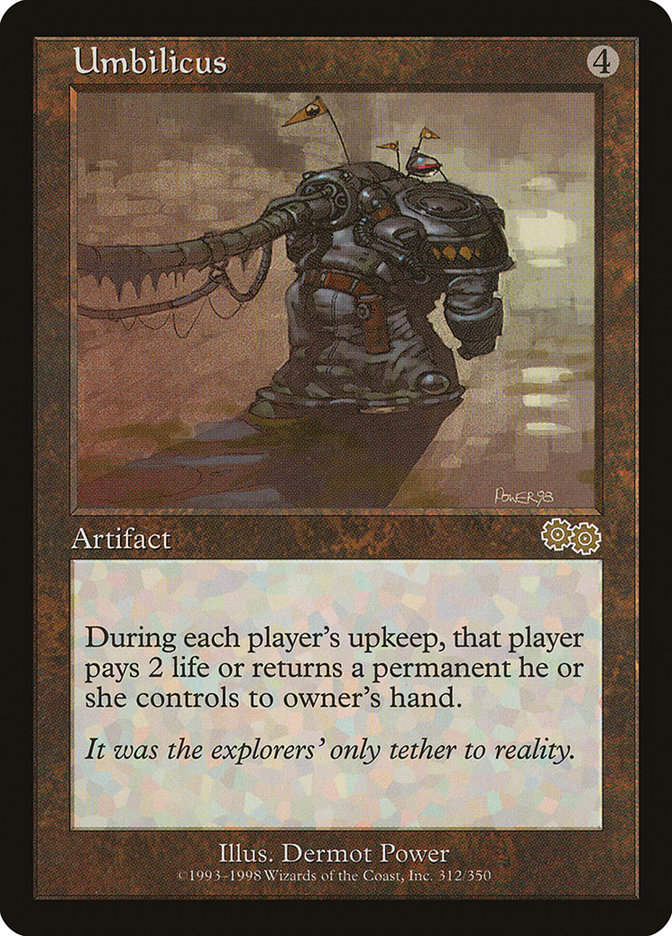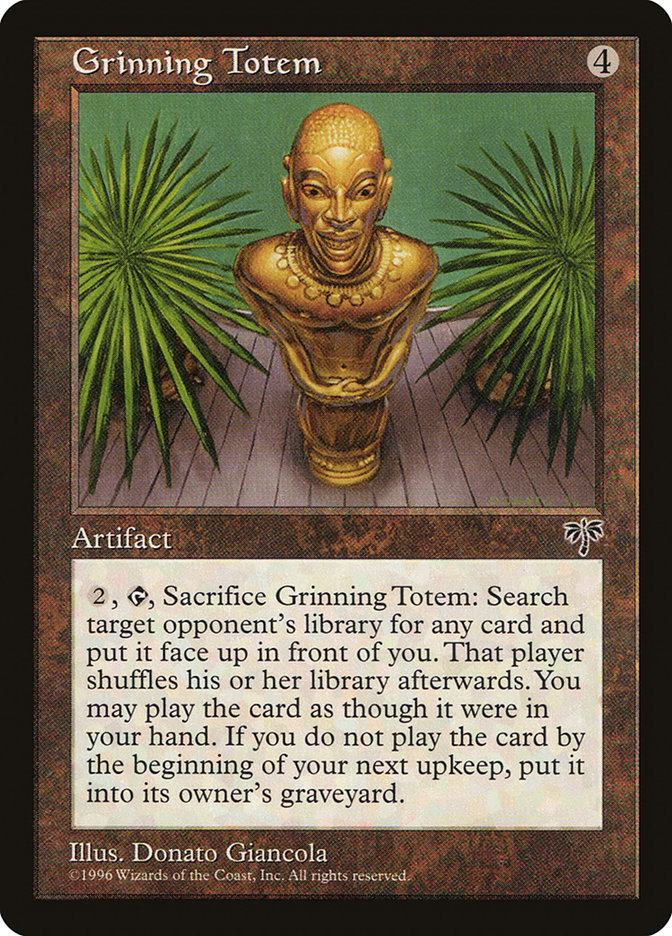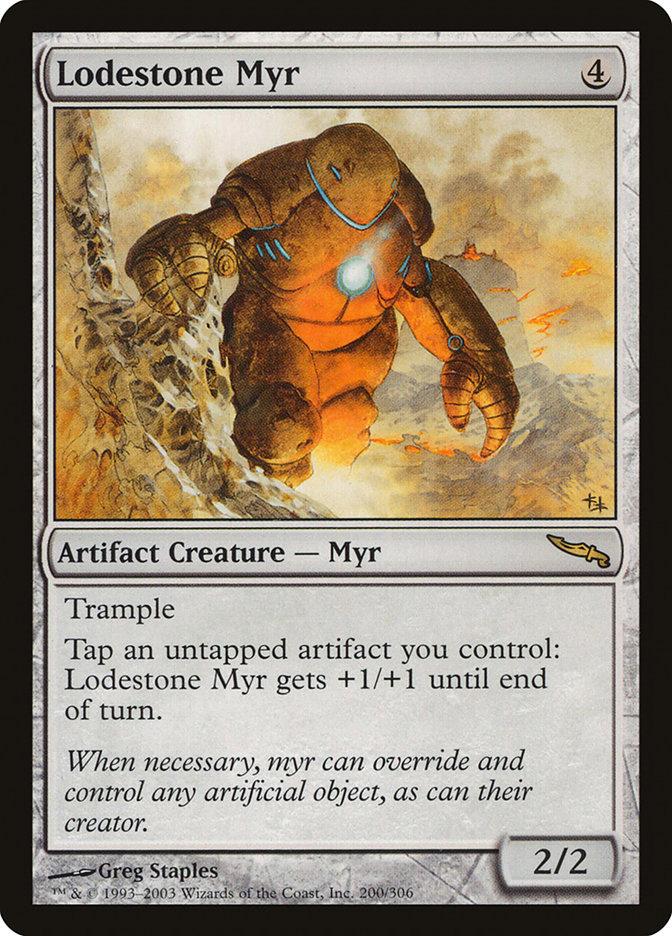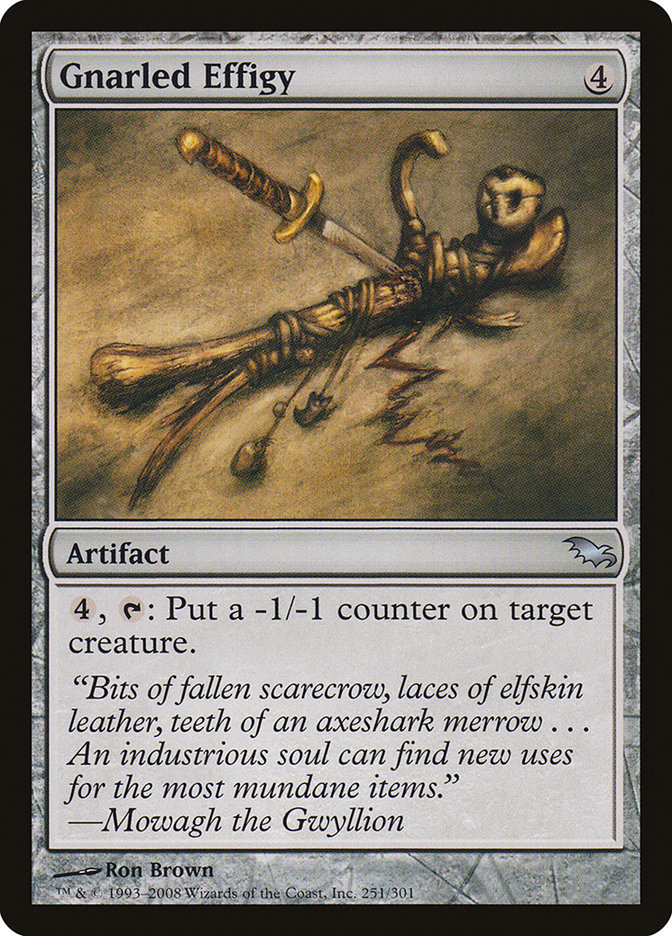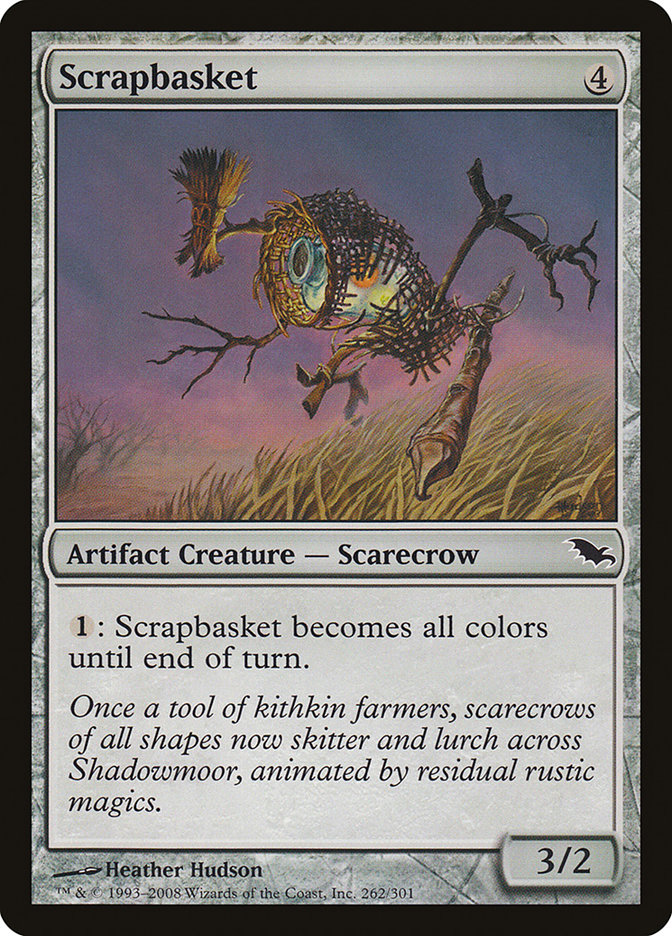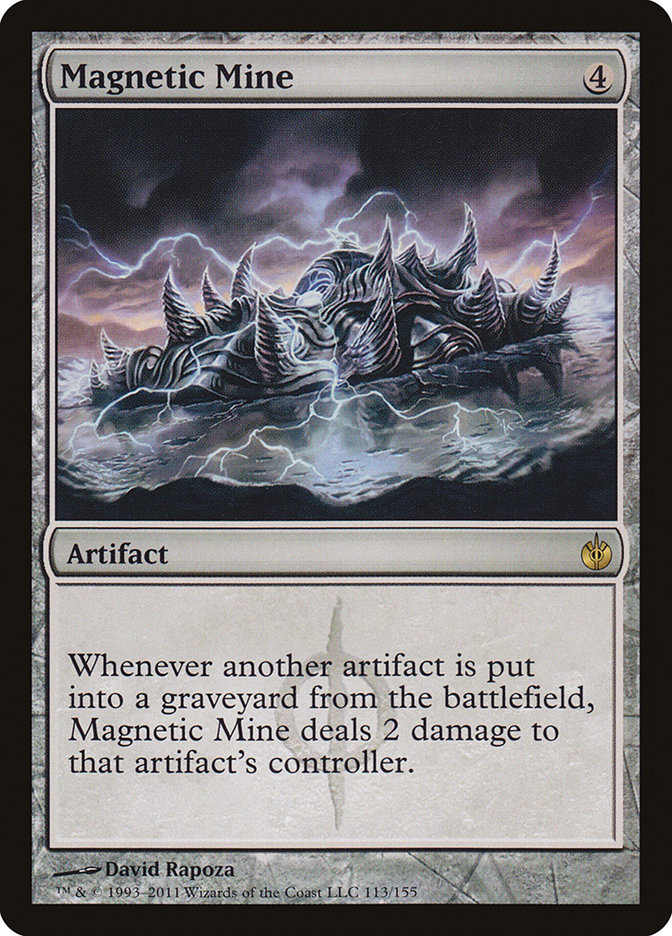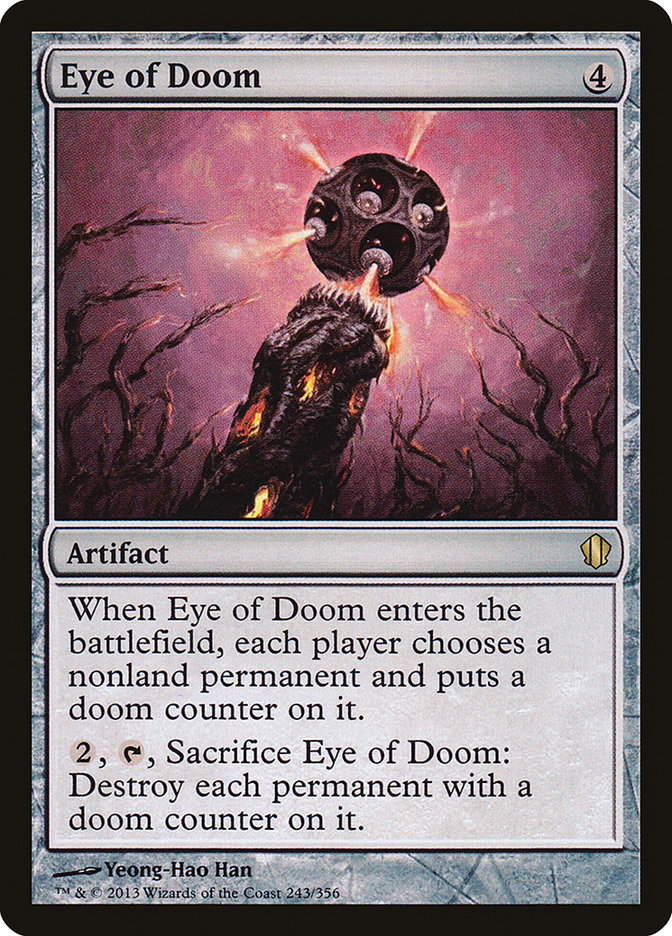Reloj de sangre Carta MTG
| Colecciones da carta | Lanzado en 2 coleccionesVer todos |
| El coste de maná | |
| Costo de maná convertido | 4 |
| Rareza | Extraña |
| Tipo | Artefacto |
Texto de la carta
Al comienzo del mantenimiento de cada jugador, ese jugador regresa un permanente que controle a la mano de su propietario a menos que pague 2 vidas.
En época de guerra, el tiempo no se mide con arena, sino con sangre.
Cartas Similares
El Reloj de Sangre es un intrigante artefacto en el reino de MTG, que guarda similitudes con otras cartas que manipulan acciones por turnos. Toma por ejemplo al Umbilicus, que es prácticamente su gemelo, compartiendo el mismo efecto de rebote al devolver permanentes a la mano de su propietario a menos que paguen 2 vidas durante su mantenimiento. Mientras que el Reloj de Sangre ofrece la misma elección con el ligero giro de pagar 2 manás, ambas cartas convierten el juego en una danza táctica de asignación de recursos y planificación estratégica.
Otra pieza relacionada es la Matriz de Almacenamiento. Aunque no implica manipulación de la mano, restringe la fase de desbloqueo, haciendo que los jugadores elijan entre desbloquear tierras, criaturas o artefactos. Su naturaleza disruptiva, similar a la del Reloj de Sangre, inyecta un nivel de complejidad en el momento de jugar y la gestión de recursos.
Al examinar estos artefactos, queda claro que el Reloj de Sangre se mantiene como una opción formidable para los entusiastas de MTG que buscan introducir un elemento de control y ajuste de tempo a sus mazos, una dinámica que puede ser crucial en juegos prolongados donde las ventajas estratégicas son clave.
Cartas similares a Reloj de sangre por color, tipo y coste de maná
Aspectos positivos de la carta
Ventaja en cartas: El Reloj de Sangre ofrece un mecanismo único para recuperar permanentes valiosos del campo de batalla de vuelta a tu mano. Esto se puede utilizar de manera efectiva para capitalizar los efectos de entrada al campo de batalla múltiples veces, asegurando que tengas un flujo constante de utilidad y opciones en cada turno.
Aceleración de recursos: Navegar de manera inteligente las sutilezas del Reloj de Sangre puede acelerar tus recursos al darte acceso repetido a tus propios permanentes. Esto puede ser especialmente potente si estás manipulando costos y beneficios para obtener una ventaja sobre tu oponente a lo largo de una partida.
Velocidad instantánea: Aunque el Reloj de Sangre en sí no es una carta instantánea, se sincroniza bien con jugadas a velocidad instantánea. Crea un escenario donde los oponentes deben considerar cuidadosamente sus movimientos o arriesgarse a caer en una desventaja de tempo. Integrar hechizos a velocidad instantánea junto con el Reloj de Sangre puede obligar a los oponentes a actuar, haciendo que tus jugadas sean más potentes durante sus turnos.
Aspectos negativos de la carta
Requisito de descarte: El Reloj de Sangre a menudo puede forzar a los jugadores a tomar decisiones complicadas sobre qué carta devolver a su mano. Si no hay permanentes disponibles, se puede perder una posición valiosa en el tablero.
Costo específico de maná: El Reloj de Sangre requiere una mezcla de maná genérico y específico para lanzarse. Este requisito de doble color a veces puede complicar el lanzamiento dentro de mazos monocolor o limitados por color.
Costo de maná comparativamente alto: Con un costo de lanzamiento de cuatro manás, el Reloj de Sangre ocupa un momento crucial en muchas estrategias de juego. Considerando esto, algunos jugadores podrían encontrar otras opciones de cuatro manás que avancen su estado de tablero u ofrezcan un impacto inmediato más atractivas.
Razones para incluir el Reloj de Sangre en tu colección
Versatilidad: El Reloj de Sangre es un artefacto único que puede encajar en una variedad de construcciones de mazo, especialmente aquellas que giran en torno a permanentes recurrentes para un valor añadido o al desbloqueo de criaturas para un uso repetido. Su capacidad de devolver permanentes a la mano cada turno se puede explotar en mazos diseñados para reutilizar efectos de entrada al campo de batalla.
Potencial de combo: En conjunto con cartas que tengan efectos beneficiosos de entrada al campo de batalla o de sacrificio, el Reloj de Sangre puede ser piedra angular en algunos combos poderosos. Esta sinergia permite a los jugadores crear un motor indirecto, activando habilidades de forma consistente a lo largo del duelo.
Relevancia meta: En formatos donde el ritmo de juego es más lento y las estrategias tienden hacia la generación de valor, el Reloj de Sangre puede brillar al interrumpir el estado de tablero de los oponentes mientras avanza tu plan de juego. En metajuegos cargados de tácticas basadas en criaturas, puede volverse particularmente disruptivo.
Cómo vencer
El Reloj de Sangre es un artefacto intrigante que puede potencialmente interrumpir los planes de juego tanto tuyos como de tu oponente en MTG. Requiere que cada jugador devuelva un permanente que controlen a su mano al comienzo de su mantenimiento, o pague 2 vidas. Para convertir esto en una ventaja, es crucial tener una estrategia que mitigue el impacto del Reloj de Sangre en tu tablero mientras maximiza su inconveniente para tu oponente.
Un enfoque efectivo es incorporar permanentes de bajo costo o generadores de valor en tu mazo que se puedan volver a jugar fácilmente. De esta manera, minimizas el inconveniente del reloj para ti. Las cartas con efectos de entrada al campo de batalla o criaturas que puedas lanzar por un costo reducido pueden convertir la capacidad del Reloj de Sangre en una ventaja recurrente. Por otro lado, tu oponente puede no estar tan preparado, y la pérdida consistente de un permanente o vida puede inclinar rápidamente el juego a tu favor. Obligarlos a tomar una decisión complicada en cada mantenimiento puede llevarte a una posición ganadora para un jugador bien preparado. Ten en cuenta tácticas de evasión como la eliminación de encantamientos o habilidades que anulen habilidades activadas. El juego técnico combinado con la construcción estratégica de mazos es clave para superar el desafío constante del Reloj de Sangre.
Donde comprar
Si estás buscando comprar una carta MTG Reloj de sangre de un coleccione específico como Saviors of Kamigawa and The List, existen varias opciones confiables que debes considerar. Una de las fuentes principales es tu tienda de juegos local, donde a menudo puedes encontrar paquetes de refuerzo, cartas individuales y mazos preconstruidos de colecciones actuales y pasadas. A menudo ofrecen el beneficio adicional de una comunidad donde puedes intercambiar con otros jugadores.
Para un inventario más amplio, particularmente de colecciones más antiguos, mercados en línea como TCGPlayer, Card Kingdom y Card Market ofrecen amplias selecciones y te permiten buscar cartas de colecciones específicos. Las plataformas de comercio electrónico más grandes como eBay y Amazon también tienen listados de varios vendedores, lo que puede ser un buen lugar para buscar productos sellados y hallazgos raros.
Además, el sitio oficial de Magic suele tener un localizador de tiendas y listas de minoristas para encontrar Wizards of the Productos con licencia costera. Recuerde comprobar la autenticidad y el estado de las cartas al comprarlas, especialmente a vendedores individuales en mercados más grandes.
A continuación se muestra una lista de algunos sitios web de tiendas donde puede comprar las Reloj de sangre y otras cartas MTG:
 COMPRAR
COMPRAR BurnMana es un socio oficial de TCGPlayer
- eBay
- Card Kingdom
- Card Market
- Star City Games
- CoolStuffInc
- MTG Mint Card
- Hareruya
- Troll and Toad
- ABU Games
- Card Hoarder Magic Online
- MTGO Traders Magic Online
Ver productos MTG
Impresiones
La carta Reloj de sangre Magic the Gathering se lanzó en 2 colecciones diferentes entre 2005-06-03 y 2005-06-03. Ilustrado por Keith Garletts.
| # | Liberado | Nombre | Código | Símbolo | Número | Marco | Disposición | Borde | Artista |
|---|---|---|---|---|---|---|---|---|---|
| 1 | 2005-06-03 | Saviors of Kamigawa | SOK | 153 | 2003 | Normal | Negra | Keith Garletts | |
| 2 | The List | PLST | SOK-153 | 2003 | Normal | Negra | Keith Garletts |
Legalidades
Formatos de Magic the Gathering donde Reloj de sangre tiene restricciones
| Formato | Legalidad |
|---|---|
| Commander | Legal |
| Legacy | Legal |
| Modern | Legal |
| Oathbreaker | Legal |
| Vintage | Legal |
| Duel | Legal |
| Predh | Legal |
| Penny | Legal |
Reglas e información
La guía de referencia para las reglas de las cartas Reloj de sangre de Magic: The Gathering proporciona las reglas oficiales, las erratas emitidas, así como un registro de todas las modificaciones funcionales que se han producido.
| Fecha | Texto |
|---|---|
| 01/06/2005 | Un jugador que no controla permanentes no necesita pagar 2 vidas (aunque puede elegir hacerlo). |
| 01/06/2005 | Un jugador con menos de 2 puntos de vida no puede pagar 2 puntos de vida y debe devolver un permanente. |
| 01/06/2005 | La elección de qué permanente devolver o si pagar vida se realiza cuando se resuelve la habilidad desencadenada. |
